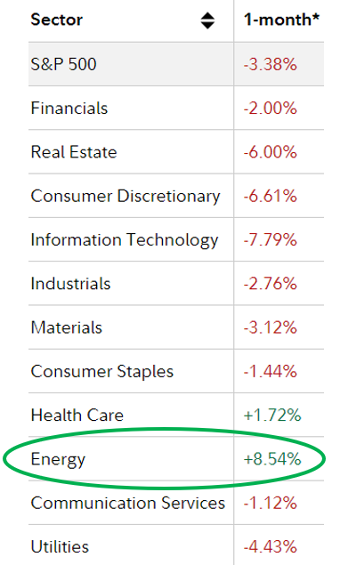Economics
Louis Navellier’s Market Forecast
Why Louis expects deflation from China to lower rates in the U.S. … when rate cuts are coming … the sector that’s surging as tech slumps … the…

Why Louis expects deflation from China to lower rates in the U.S. … when rate cuts are coming … the sector that’s surging as tech slumps … the importance of portfolio balance
One of the most respected analysts in our industry – Louis Navelier, editor of Growth Investor – made a bold market forecast yesterday.
We’ll share it below, adding additional context to make sure we’re all on the same page. Better yet, we’ll highlight the market sector that’s been surging in recent weeks that Louis wants readers invested in today.
We’ll begin with Louis’ Weekly Market Commentary from yesterday:
Looking forward, I expect that as the U.S. imports some Chinese deflation, key interest rates will likely decline to the Fed’s 2% annual target range in the upcoming months.
On the Chinese deflation front, here’s The New York Times explaining what’s been happening:
The United States has spent much of the past 18 months struggling to control inflation. China is experiencing the opposite problem: People and businesses are not spending, pushing the economy to the verge of a pernicious condition called deflation.
Consumer prices in China, after barely rising for the previous several months, fell in July for the first time in more than two years…
For 10 straight months, the wholesale prices generally paid by businesses to factories and other producers have been down from a year earlier. Real estate prices are tumbling.
Those patterns have amplified concerns about deflation, a potentially crippling pattern of broadly falling prices that tends to also depress the net worth of households — as it did in Japan for years — and make it very hard for borrowers to repay their loans.
Given the interconnected nature of our global economy, if China’s struggle with deflation intensifies, it will impact our economy as Louis suggested.
As we’ve noted here in the Digest, many of the most popular U.S. stocks rely on China for huge portions of their revenues (Apple, Nike, Starbucks, Nvidia, and Intel are just a few such names). If Chinese demand is dropping, it’s only a matter of time before that shows up on the respective Profit & Loss statements of these companies.
Beyond the impact on corporate earnings, Louis suggests that the coming deflationary influence will bring some relief to key interest rates here in the U.S. in the coming months. We hope that’s true because, at the moment, climbing bond yields are a big problem for the prospect of lower rates.
Treasury yields keep pushing higher, putting pressure on stocks
Louis often says, “the Fed doesn’t like to fight market rates.” Unfortunately, market rates are soaring.
Last week, the 10-year yield tried to push north through last October’s high but failed. Since surging yields are headwinds for the average stock portfolio, the failure to break through resistance was good news for stock market bulls.
But as I write Tuesday morning, the 10-year Treasury yield is climbing again, and has pierced last October’s high as you can see below.
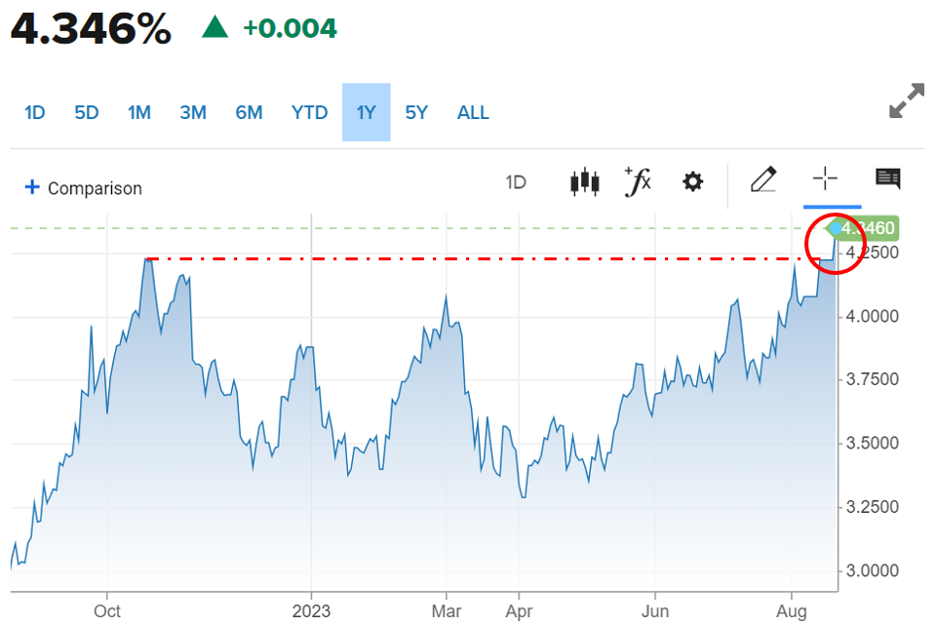 Source: CNBC
Source: CNBC
Meanwhile, the 30-year Treasury yield also took out last October’s high.
Yesterday, it traded near 4.47% but has pulled back slightly to 4.44% as I write. These levels are still above those from last October.
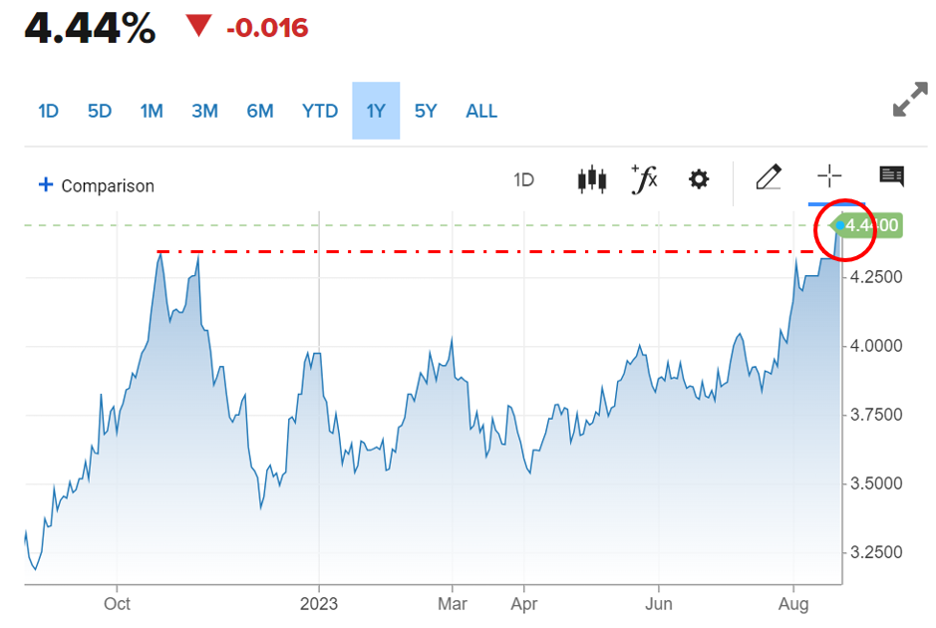 Source: CNBC
Source: CNBC
The broad market will have a hard time being bullish, and the Fed will face a challenge being dovish, while these government bond yields are racing higher.
So, coming full circle to Louis, some deflation from China that dovetails into lower bond yields over the next few months would be welcomed news for stocks.
Returning to Louis’ Weekly Market Commentary, let’s pick back up with the Fed policy
From Louis:
[The coming decline in yields/rates] will allow the Fed to begin cutting key interest rates by its December FOMC meeting. I also expect further Fed cuts in early 2024.
Let’s get more context for Louis’ forecast with the help of the CME Group’s FedWatch Tool. This tool surveys traders to assign probabilities for different fed funds rate levels at various dates in the future.
As I write Tuesday morning, 2% of traders believe the Fed will make its first cut to interest rates in December.
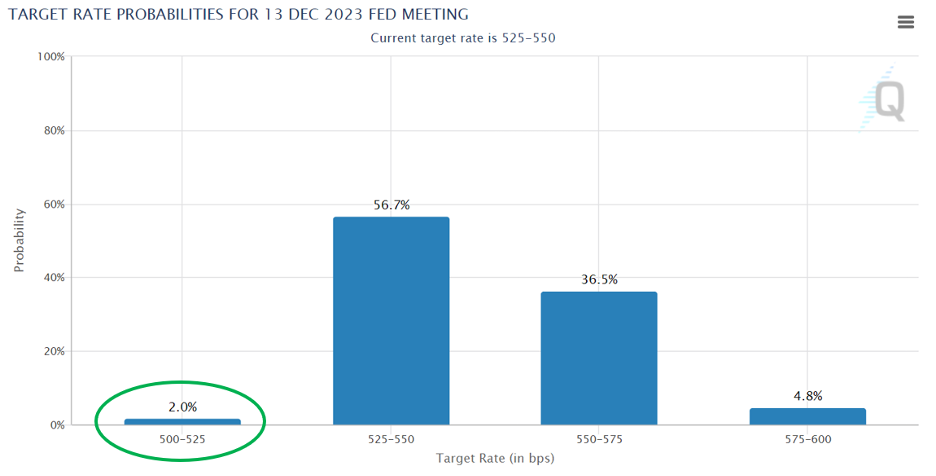 Source: CME Group
Source: CME Group
While this isn’t the prevailing opinion, if Louis is right and we see some of that deflation from China, these probabilities could change rapidly.
When we look farther out in 2024, the FedWatch Tool probabilities echo Louis’ call for additional rate cuts.
There’s no FOMC meeting in February, but as you can see below, there are roughly 34% odds on at least one rate-cut through the March 2024 meeting.
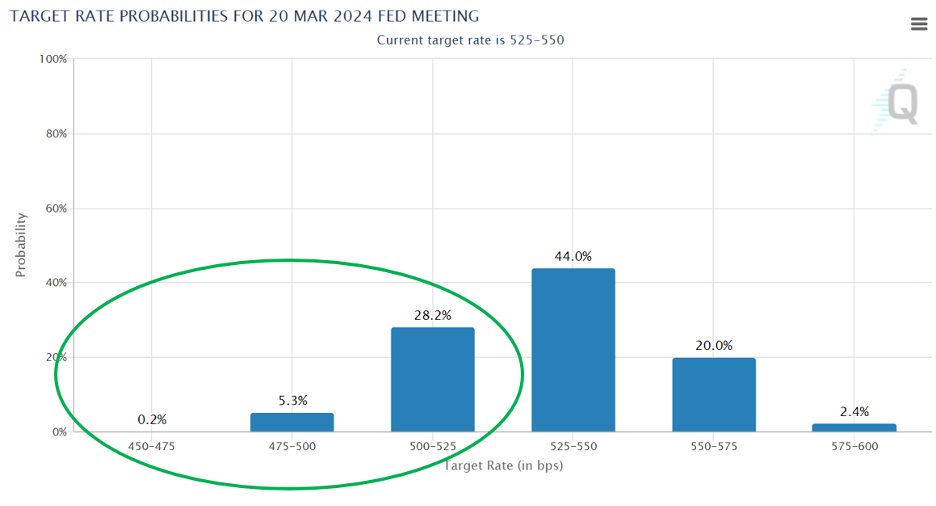 Source: CME Group
Source: CME Group
Here’s Louis’ forecast for farther out in 2024:
As the Presidential election approaches, the Fed usually likes to crawl in a hole and hide, since it does not want to be part of the Presidential debates.
Overall, I expect that the breadth and power of the stock market to steadily improve thanks to healthy consumer spending.
In the meantime, there’s a corner of the market has been surging in recent weeks, and if you’ve followed Louis’ advice, your portfolio is up
Regular Digest readers know that Louis is an energy bull.
As oil and gas prices have surged in recent weeks, the price of West Texas Intermediate Crude (WTIC) has climbed back above $80 per barrel. This has been a boost to top-tier energy stocks.
Here’s Louis:
My energy stocks have emerged as market leaders and exhibited tremendous relative strength in August.
That might surprise you, but you can’t argue with the numbers.
Below, we look at one-month performance for the S&P’s 11 sectors. As you can see, it’s been a painful stretch with just two sectors in the green. And as Louis just noted, energy is the market leader, coming in with a whopping 8.54% one-month return compared to a sea of red.
By the way, don’t miss “Information Technology” (think “tech”) coming in as the worst-performing sector at -7.79%. This is a reversal of sector performance from only a few months ago when energy slumped and posted the worst sector returns while tech soared, coming in with the highest returns.
The performance reversal of “first to worst” (and vice versa) is a helpful reminder of why you want a balanced portfolio
It’s also a good reminder of why reactionary selling to every single sector/market pullback can derail long-term investment goals.
Here’s Louis’ take on the interplay between energy and tech stocks:
…Our energy stocks have been an oasis as AI stocks were being hit with profit-taking.
I can tell from some of your e-mails that many investors are over concentrated in just AI stocks and do not have energy stocks.
I remember telling investors that energy stocks benefit from a seasonal surge in demand in the summer months, but apparently some did not believe me, even though this seasonal demand has happened every year I have been alive.
I want you to have AI, energy, and other stocks I recommend, so you do not have to worry.
To Louis’ point, below we compare XLE, which is the SPDR Energy Select ETF with XLK, the SPDR Technology Select ETF.
Since the beginning of summer (June 1), XLE is up 16% while XLK is up less than 3%, with losses piling up here in August.
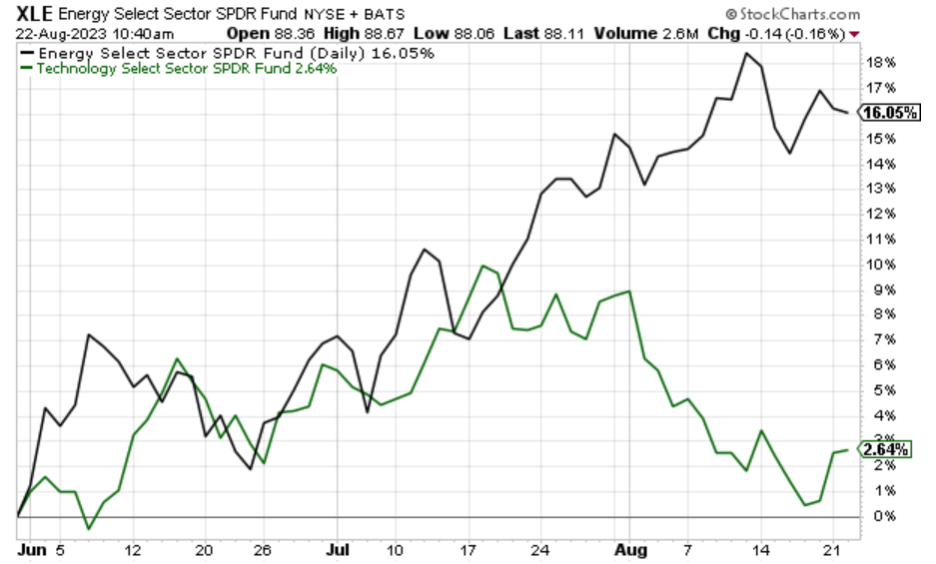 Source: StockCharts.com
Source: StockCharts.com
To be clear, Louis remains very bullish on tech and select AI stocks
Louis has positioned his subscribers in several AI plays that he expects will be huge winners in the months to come. But this comparison serves as a helpful reminder of the importance of maintaining a balanced portfolio, as well as a balanced perspective on returns.
On that note, we’ll give Louis the final word:
In conclusion, the last two months have been my strongest relative performance compared to the S&P 500 since last October and November. That’s because we have been benefitting from both AI and energy related stocks.
So, as long as you remain diversified, you can invest confidently.
I should add that I do not have exposure to financial or insurance stocks that can suffer from higher interest rates as well as natural disasters from earthquakes, fires, hurricanes, and tornados.
When you turn on the financial media, fear sells and boost ratings. However, if you have a diversified portfolio of our fundamentally superior stocks, you can invest confidently and not worry about all the distractions that can derail a fundamentally superior stock portfolio.
Have a good evening,
Jeff Remsburg
More From InvestorPlace
- Musk’s “Project Omega” May Be Set to Mint New Millionaires. Here’s How to Get In.
- ChatGPT IPO Could Shock the World, Make This Move Before the Announcement
- It doesn’t matter if you have $500 or $5 million. Do this now.
The post Louis Navellierâs Market Forecast appeared first on InvestorPlace.

Argentina Is One of the Most Regulated Countries in the World
In the coming days and weeks, we can expect further, far‐reaching reform proposals that will go through the Argentine congress.
Crypto, Crude, & Crap Stocks Rally As Yield Curve Steepens, Rate-Cut Hopes Soar
Crypto, Crude, & Crap Stocks Rally As Yield Curve Steepens, Rate-Cut Hopes Soar
A weird week of macro data – strong jobless claims but…
Fed Pivot: A Blend of Confidence and Folly
Fed Pivot: Charting a New Course in Economic Strategy Dec 22, 2023 Introduction In the dynamic world of economics, the Federal Reserve, the central bank…
